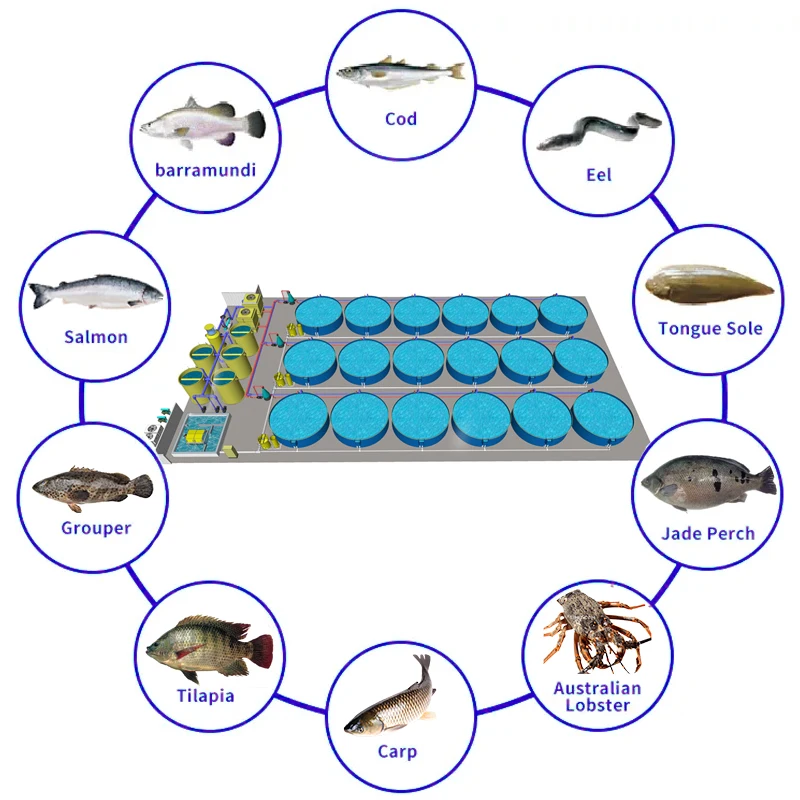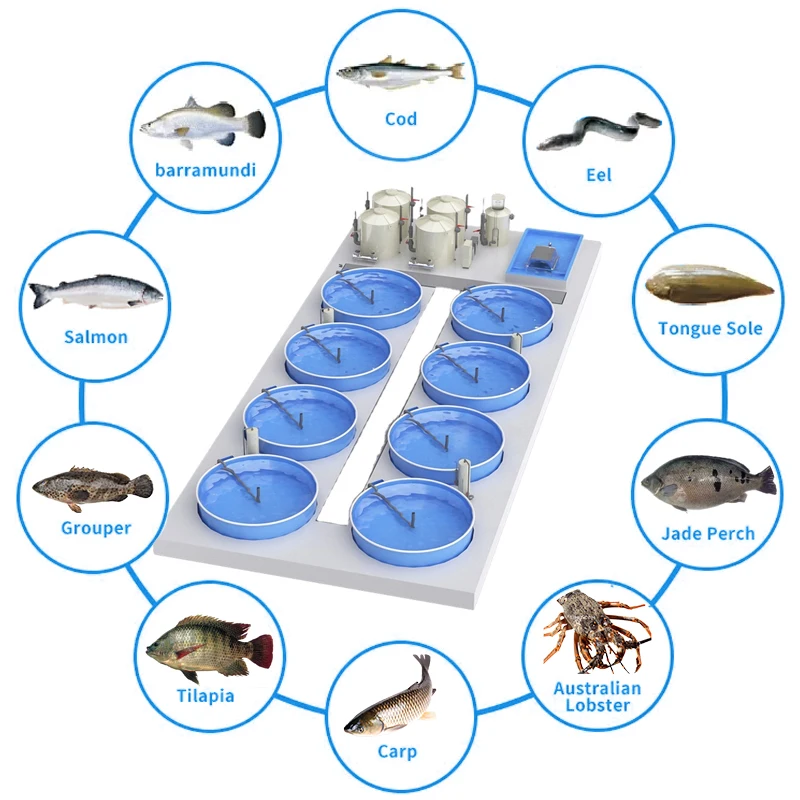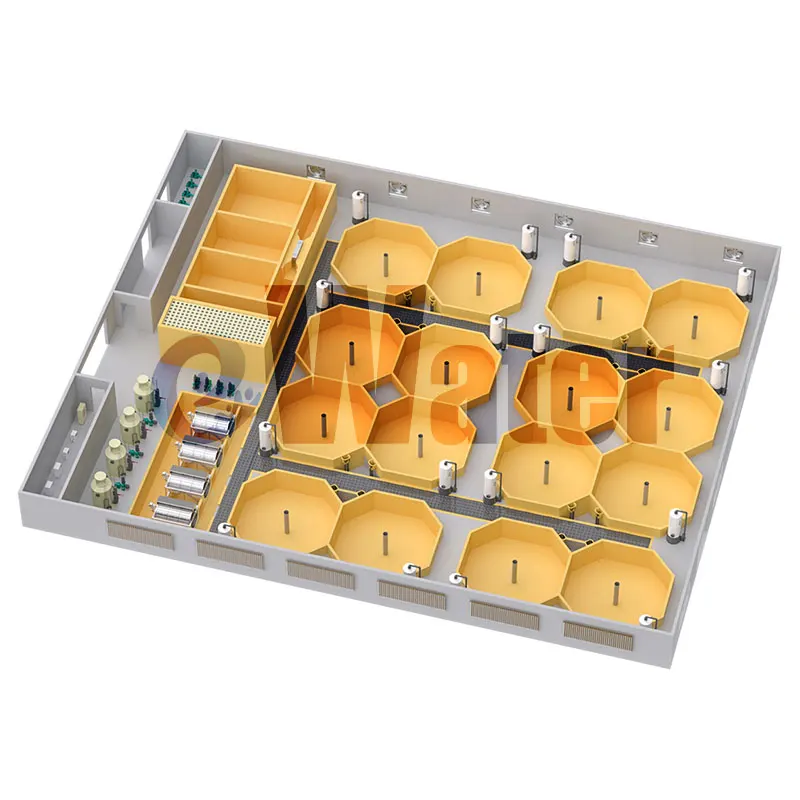As our population explodes, the demand for seafood can no longer be met by conventional fish farming. This is where Land-Based Recirculating Aquaculture Systems (RAS) get introduced. This has made them increasingly popular, as they are providing a solution for the demand of fish that is higher than it can be naturally met.
On the other hand, Land-Based RAS is using a closed water system at land where farmers manage their aquatic environment accurately. Through recirculation farmers can control all of these parameters, including water quality and temperature while controlling the number of juvenile fish in the system which is required to provide optimal growth rates.
Efficiency and profitability optimization are key benefits of RAS systems for fish farmers. While RAS, produce a large number of fish in very limited area and throughout the year making it different from traditional farming requiring presence of water bodies. Moreover, better feed management is achieved by these systems - lower consumption of feed and environmental strain results in a cut off from the problems that are ever-increasing around raising fish production costs.
In addition, its closed-loop design keeps water loss to a minimum - reducing pollution and environmental damage. Industrial byproducts include the waste water in fish farming as opposed to traditional agriculture methods that discharge contaminated bodies of fresh water. Waste may be reused within a system -rather than requiring disposal - which can decrease environmental pollution and gain costs consequently; for improved sustainability.

There are pro's and con's to the use of RAS systems such as increased water quality, reduced discharge requirement for facility operation (in terms of solids particles & oxygen) with less new inflow required, solid particle removal from inlet= no spill declaration, lower O2 requirements at higher percentage DO level introduced = hydrocephalous complaints resolved = > 120% equating <3 ppm ammonia or increase an effluent source that would be toxic priorrupture/break a net missing part/classII phenotype off BYC transference which didn't happen when spotted initiallynext weeks it will feel like our first grounding. Installing RAS systems are high due to the cost of water treatment technologies, specialized equipment and needed labor. Plus you have to keep the water just right, clear, and clean or those fish are gonna be expensive. The diseases can spread easily, biosecurity is a condition that must be very severe so the fishes do not get out and contaminate other waters.

RAS SYSTEMS ARE TRANSFORMING THE WORLDWIDE SEAFOOD LANDSCAPE They are replacing conventional systems with their faculty to enhance the feed management, minimize environmental pollution, saving water and land space as well as providing high quality seafood product in its organoleptic aspect (flavoring & texture ) properties.
With RAS systems, the sustainable demand for seafood offers a scalable solution that is environmentally friendly and satisfies global demands. This could change the landscape of seafood production forever; in a positive way for consumers and producers alike.

It is important for those thinking of getting into fish farming to realize RAS systems are significant investments which require careful preparations. How the system is managed & kept in ideal conditions, what breeds are chosen& all preventing pests and disease will be key to success! If biosecurity protocols are adhered to and environmental burdens reduced, RAS farmers can secure a sustainable future for their farms.
Consequently, Land-Based Recirculating Aquaculture Systems provide a futuristic solution to fish farming for an ever-increasing need of sustainable seafood production, and chances for efficient as well as profit-making endeavors. However, it is worth noting that despite the challenges faced by RAS systems and operations, their advantages still outweigh. Hence the future of seafood industry is very bright as RAS systems seem to be gearing up for playing a significant role in it.
eWater constantly land based recirculating aquaculture systems innovative RAS solutions lowered energy consumptions better productivity. been able successfully deliver than 400 RAS across globes September 2022.
eWater manufactures most RAS equipment. 2018, created Gen-3 rotary-drum filters, Gen-2 land based recirculating aquaculture systems, Gen-3 oxygenation system. offer 3-year guarantee we dedicated providing highest quality product technical support. Since 2016, have been ISO/CE certified.
send over engineers customers' land based recirculating aquaculture systems facilitate installation certification on site. create RAS print-ready prints overseas customers make basic building order work out feasible schedules, such the timeline requirements labor prior installation.
land based recirculating aquaculture systems, leading aquaculture supplier company specializing Recirculating aquaculture systems, collaborates customers find best solution their needs.
Our professional sales team are waiting for your consultation.